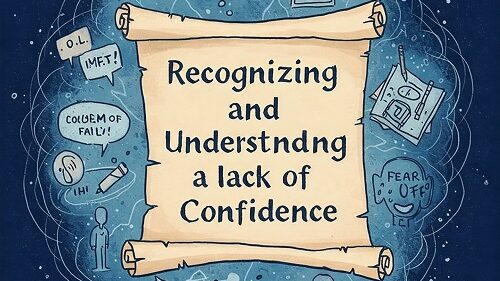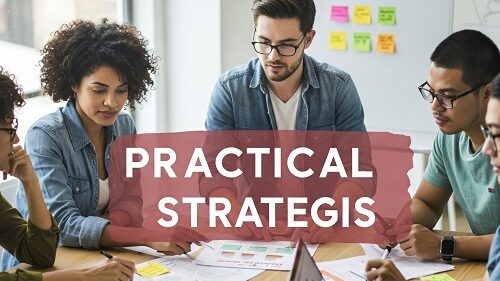A Success At Building Confidence: E-Book summary and Free download
Provide a detailed overview of the main themes, important ideas, and key facts presented in the excerpts from “The Confidence Factor,” focusing on the nature, importance, cultivation, and application of self-confidence.
Main Themes
This document primarily revolves around the central theme of self-confidence and its pervasive influence on various aspects of human life. Key sub-themes explored include:
- The Necessity of Confidence: Why confidence is essential for navigating life’s challenges and functioning effectively in different situations.
- Identifying and Addressing a Lack of Confidence: Recognizing the signs of low self-confidence and understanding its potential roots.
- Strategies for Building and Boosting Confidence: Practical tips and techniques for immediate and sustained improvement in self-confidence levels.
- The Role of Belief Systems and Mindset: How internal beliefs and perspectives shape confidence and how to cultivate a confident mindset.
- The Connection Between Physical and Mental Confidence: The Impact of Body Image and Physical Well-Being on Self-Assurance.
- Confident Communication: Techniques for speaking effectively and projecting confidence through verbal delivery.
- Confidence in Interpersonal Relationships: The Importance of Confidence for Healthy and Successful Relationships.
- Supercharging Confidence: Advanced strategies for achieving a high level of self-confidence that attracts positive attention.
- Confident Resilience: How confidence aids in overcoming hardships and challenges.
- Tuning the Inner Voice for Confidence: The Power of Internal Dialogue and Intuition in Fostering Self-Belief.
Most Important Ideas and Facts
1. The Fundamental Need for Confidence:

- Confidence is crucial for handling life’s challenges effectively. As stated in the foreword, “…the need for confidence is essential if the individual is going to be able to handle these life issues adequately and effectively.”
- In competitive environments, confidence enables individuals to seek help without feeling threatened, to lead others, and to make decisive decisions. The text highlights that, “Those who are confident will find that they are able to get others to follow their lead without too much effort or objections.”
- Confidence fosters faith and strength in one’s decisions, leading to positive and beneficial actions. Without it, task completion can encounter “snags that no one wants.”
2. Recognizing and Understanding a Lack of Confidence:

- Lack of self-confidence is often evident and difficult to disguise.
- Key signs of low confidence include making excuses to avoid tasks and being quick to blame others when things go wrong. In contrast, confident individuals “would just apologize for the mistake and move on.”
- Lack of confidence often stems from negative past experiences and ingrained negative remarks that impact an individual’s ability to function positively. The text notes that it “usually stems from deeper issues, such as being consistently told or reminded of the individual’s uselessness, being put down a lot, being laughed at…”
3. Practical Strategies for Enhancing Self-Confidence:

- Instant Boosters: The document outlines ten immediate tips, including questioning worst-case scenarios, trying new things and achieving small successes, listening to uplifting music, sticking to plans, using meditation, exercising, facing fears, creating something useful, reframing past mistakes, and improving social skills.
- Cultivating a Positive Belief System: The belief system is a “very powerful tool or asset” that dictates thought processes and overall outlook. Positive core values and a sense of spiritual well-being contribute to “unlimited confidence.”
- The Importance of Physical Image: A healthy and attractive body can “automatically boost the self-confidence levels of the individual.” Activities leading to a positive body image and receiving compliments are highlighted.
- Effective and Confident Communication: Practice, understanding the audience, using simple language, being mentally prepared, and speaking with a clear volume are key to speaking confidently and holding attention.
- Confidence in Relationships: Confidence is an “important ingredient” for successful relationships, mitigating insecurities and fostering positive contributions. Confident individuals are seen as attractive, and their views are valued.
- Supercharging Self-Confidence: This involves conscious efforts in perception (body language), comfortable eye contact, and the use of positive personal affirmations or “mantras” to condition the mind. “There is power in the mind and thought process, and super confident people understand the need to constantly reinforce the thought process with positive inputs.”
- Overcoming Hardships Confidently: This relies on recognizing and embracing one’s individuality, giving one’s best effort even in the face of potential defeat, and demonstrating perseverance.
- Tuning the Internal Voice: This involves practices like meditation to clear the mind, maintaining optimal physical health, focusing on dreams to generate positive energy, and holding healthy beliefs to foster trust in one’s instincts. “There is nothing more powerful than the body and mind, which is driven by confidence.”
4. The Link Between Confidence and Success:

- The concluding remarks emphasize that “Having confidence will surely boost your chances of becoming a success in life.”
- Confidence is often perceived as a sign of positive attributes like intelligence, competency, and self-worth.
- Projecting a negative image of self-confidence can lead to “undesired results,” while actively working on boosting confidence can lead to “new heights.”
Notable Quotes
- “Therefore, the need for confidence is essential if the individual is going to be able to handle these life issues adequately and effectively.” (Foreword)
- “Those who are confident will find that they are able to get others to follow their lead without too much effort or objections.” (Chapter 1)
- “…lack of confidence usually stems from deeper issues, such as being consistently told or reminded of the individual’s uselessness, being put down a lot, being laughed at…” (Chapter 2)
- “Building self-confidence usually does not happen overnight and takes some practice and concerted effort.” (Chapter 3 Synopsis)
- “The belief system usually is the dictating factor of our thought process and is a very powerful tool or asset that should be used as often as possible if it helps to ensure better confidence levels are built.” (Chapter 4)
- “Image is almost always a dominant factor in confidence; therefore, having a good image in the form of a healthy and attractive body will automatically boost the self-confidence levels of the individual.” (Chapter 5 Synopsis)
- “…a confident person is usually able to capture and hold the attention of the audience long enough to make a point.” (Chapter 6 Synopsis)
- “The confidence factor also gives the individual the leeway to have his or her view actively sought after, as in most cases this viewpoint is taken to be highly valued and its content full of positive substance.” (Chapter 7)
- “There is power in the mind and thought process, and super confident people understand the need to constantly reinforce the thought process with positive inputs.” (Chapter 8)
- “Confident people are usually acutely aware of their individuality and uniqueness. Instead of avoiding the “gift,” they embrace and capitalize on it as often as possible.” (Chapter 9)
- “There is nothing more powerful than the body and mind, which is driven by confidence.” (Chapter 10)
- “Having confidence will surely boost your chances of becoming a success in life.” (Wrapping Up)
Disclaimer
It is important to note the legal disclaimer at the beginning of the document, which states that the publisher does not warrant the accuracy of the content due to the rapidly changing nature of the Internet and assumes no responsibility for errors or omissions. It also advises readers to rely on their own judgment and seek professional advice for legal, business, accounting, or financial matters. This suggests a degree of caution should be exercised when applying the advice without considering individual circumstances.